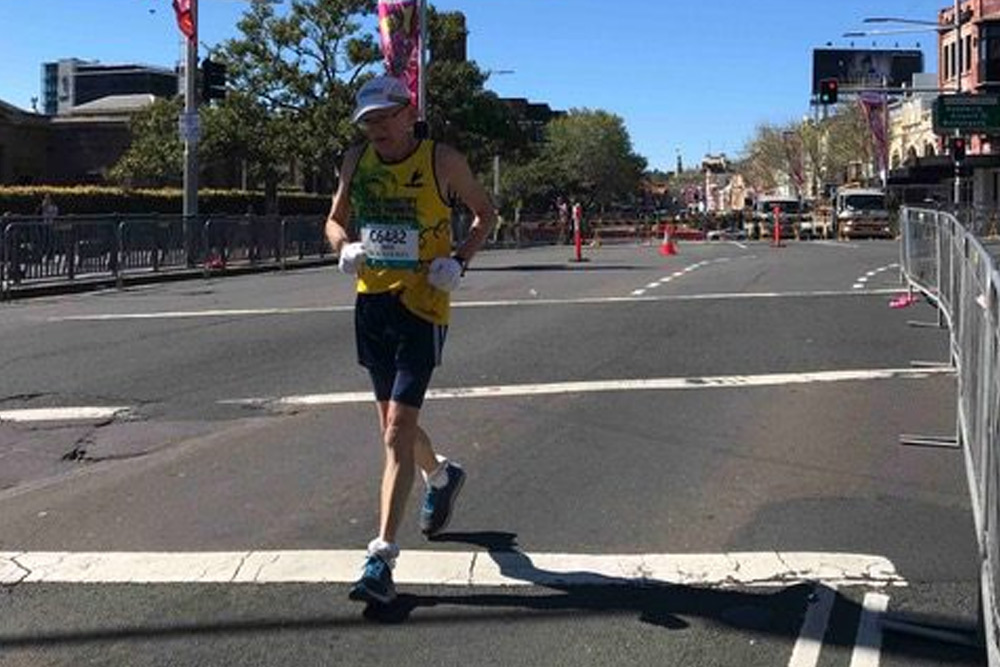Rohan Coull
What is cadence? Cadence can be defined as a beat or a rate of measurement, and with running, it is another word for stride rate and is measured in strides per minute (spm). Cadence is just one of the parameters we look at in gait, as there are many features in gait that all have their own technical terms, such as; overstride, vertical oscillation, braking distance, ground contact time, and forward lean. These features all work together to form our own individual style, though they are always distinct in some way. This is because we are all built differently, with different muscle mass, limb size, osseous alignment (including length shape and torsional qualities), different joint ranges of motion, and all the biomechanical features that form our own individual makeup and posture.
Even with how all these features come together to propel us freely and economically, there is no perfect gait. You only need to be at the finish line of a running event and see the differences in the first few competitors over the line. These participants are often different in stature, technique, and posture, yet they run similar times.
For decades we have been aware of excessive training loads or training errors leading to injury. These have been some of the measurable features for the athlete, coach and practitioner. Now, with newer technology, we have a far greater insight into the body, its movements, and the loads we deal with. This gives us an opportunity to have new, objective ways to tackle injury, removing the guesswork or ones mystical great eye. This has helped us drill down on the areas of importance and identify the best solutions for injuries.
Cadence is one of those features. If we look at elite runners, they generally have a higher cadence then recreational runners when running at the same pace. We can all appreciate that cadence increases with greater speed yet, why is it that elite runners, as a group, have a higher cadence? We don’t have an exact answer yet, but there are plenty of theories. Crucially, all elite runners have a large accumulated time on the track. Some will have been coached while some have not. However, we know that to become elite they have had to develop ways to be fast and manage the extreme loading applied to the body through training and racing.
When we look at injury rates, it shows a strange phenomenon; those who run the least, and those who run much higher distances per week are the groups most at risk to injury. The high distance runners are the model we have understood for years, yet the low mileage group is more f a puzzle.
Tissue load stress (the amount of load any specific tissue is subjected to) improves with training, and so muscle, bone, and tendons all adapt to the forces we place on them. If we are careful, consistent and manage all the load bearing we do, we can help limit ourselves from injury. Unfortunately, not all tissues adapt at the same rate; how much incidental load we experience and our build and function all vary from person-to-person. So, when we start a running program and are at the very low levels of volume, we need to be especially careful on training load and incidental load.
With that managed, we can then look at the individual. Looking back at cadence, what we typically see with recreational runners is a slow cadence. Typically accompanying a slow cadence is; overstride, high vertical oscillation, increased forward lean, greater step separation width, and increased ground reaction forces. The net effect is that these features have a high association with injury. Trying to deal with each one individually is tricky and could hamper the enjoyment of running, and almost certainly drive the runner’s economy down. However, when we increase cadence, it creates a cascade of effects with the standard being reduced stride length, decreased vertical oscillation, reduced overstride, decreased forward lean, and decreased ground reaction force. We could possibly think about it as a super feature for the recreational runner.
So, it’s not just the elite runner that needs help and guidance, but also the runner just starting out, to make sure you’re heading in the right direction as you move into running. For most of us, we are running to maintain or increase fitness, control our weight, and look to be able to get out and enjoy ourselves injury free. So, cadence may or may not be the secret to running success. It does, however, provide a powerful tool that can affect nearly every aspect of our running, and it very well could be a key factor in your running success.
If you enjoyed reading this, consider reading our post about running and how can the 3D Run Lab can help.
